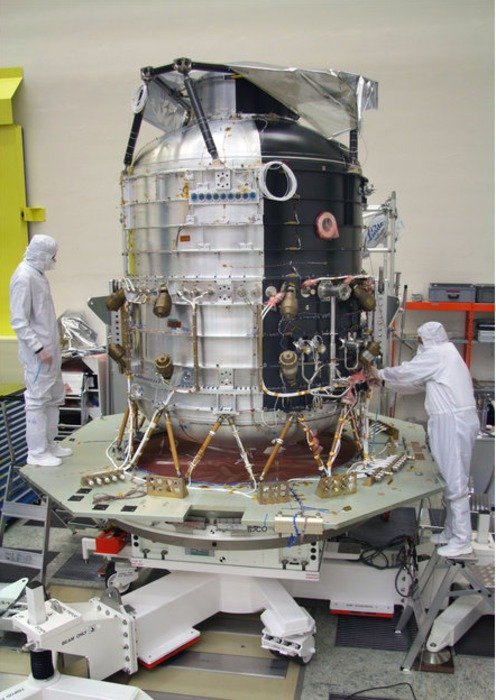This is the liquid hydrogen tank of the Herschel space telescope. Credit: ESA
PARIS, March 5 (UPI) -- A European space telescope studying the universe at infrared frequencies is expected to exhaust its supply of liquid helium coolant soon, astronomers say.
That will bring the mission of the Herschel telescope, launched in May 2009, to an end because the telescope's two cameras/imaging spectrometers and a very high-resolution spectrometer must be cooled to minus 455 degrees Fahrenheit, close to absolute zero, to make sensitive far-infrared observations.
Superfluid liquid helium in a supply tank has slowly been evaporating and could be gone within weeks, the European Space Agency said in a release from its Paris headquarters Tuesday.
At launch, the tank was filled with more than 600 gallons of liquid helium, weighing 740 pounds, enough for 3.5 years of operations in space, the ESA said.
Engineers said they believe almost all of the liquid helium is gone but confirmation will come when Herschel begins its next daily 3-hour communication period with ground stations.
"It is no surprise that this will happen, and when it does we will see the temperatures of all the instruments rise by several degrees within just a few hours," said Micha Schmidt, the Herschel Mission Operations Manager at ESA's European Space Operations Centre in Darmstadt, Germany.
Herschel has made discoveries ranging from starburst galaxies in the distant universe to newly forming planetary systems orbiting nearby young stars.
"When observing comes to an end, we expect to have performed over 22,000 hours of science observations, 10 percent more than we had originally planned, so the mission has already exceeded expectations," said Leo Metcalfe, the Herschel Science Operations and Mission Manager at ESA's European Space Astronomy Center in Madrid.
Engineers said Herschel would be propelled in May into a long-term stable parking orbit around the sun.















